When most people think about Australia, they envisage jumping kangaroos, sunny conditions, and the vast outback.
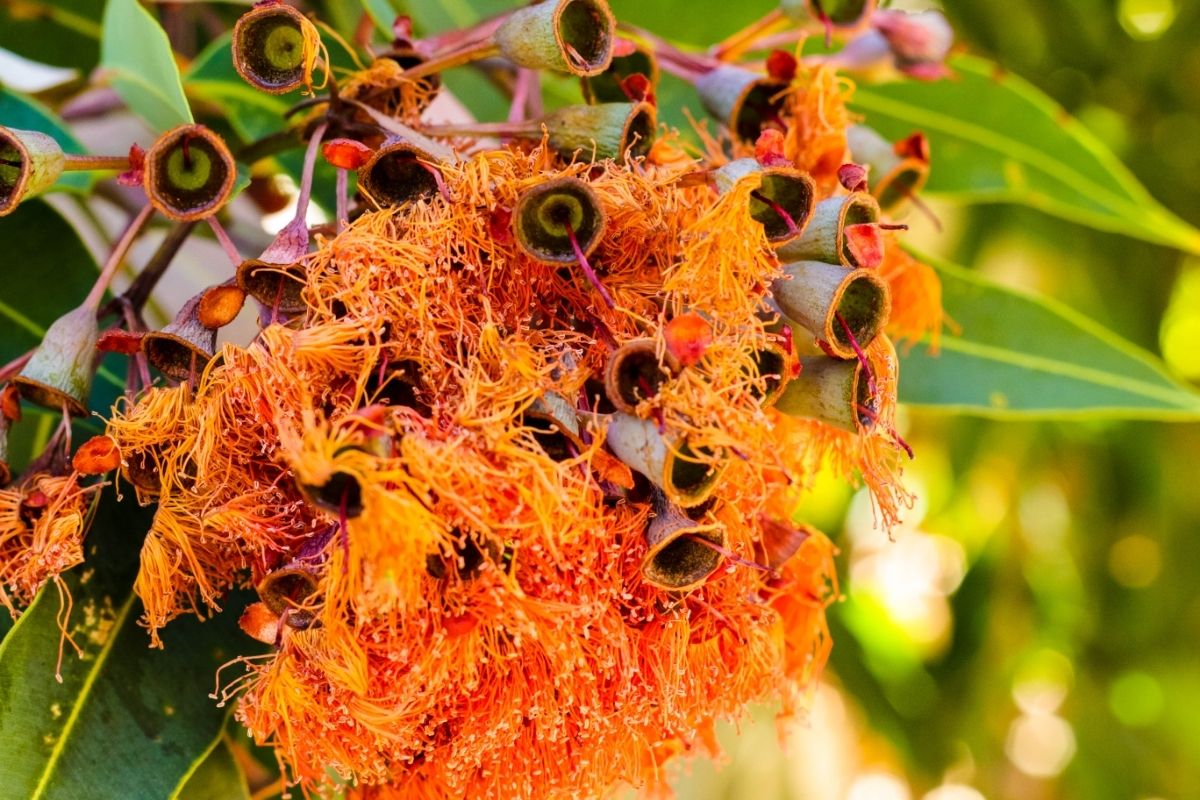
But, if you’ve fallen in love with this large country’s sprawling natural beauty and want to recreate it in your own place, you can!
There are species aplenty that can suit gardeners ranging from those who’ve never picked up a trowel to those with landscaping businesses. Whether you live in Australia or not, you can plant some fantastic species that we believe will enrich your life with their wholesomeness!
But, as there’s the outback worth of plant species (literally!), finding the best ones could seem like a never-ending task. So, to stop you from feeling like you’re wandering through a confusingly similar yet deserted internet landscape, we’ve made the following article.
So that you can see the wood for the trees, we’ve spent time carefully curating the information below. This means that you won’t have to waste time weighing up the pros and cons of each beautiful Australian plants. And, you can get on with actually gardening!
So, to learn more about stunning leafy species native to this diverse rolling landscape, Read on!
1. Jounama Snow Gum (Eucalyptus Pauciflora Subsp. Debeuzevillei)
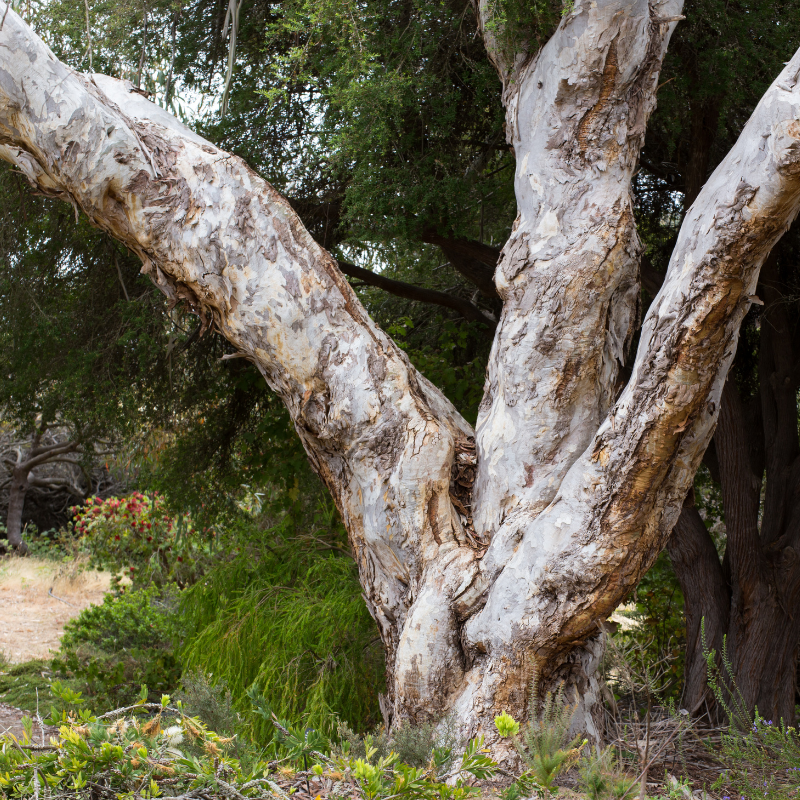
The Jounama snow gum is a eucalyptus sub-species known for having peeling bark and baby blue-colored flowers. To make sure you give this plant the best chance of thriving, we recommend nestling it into some soil with adequate drainage and bright sunlight.
2. Rough Tree Fern (Cyathea Australis)

If you’re on the lookout for a fern that’s native to Australia, the Rough tree fern is an ideal choice because it literally has ‘australis’ in the name! In addition, this is easy to care for species, tolerating -8 degrees Celsius, diverse sunlight, and soil conditions.
3. Leatherwood ‘Pink Cloud’
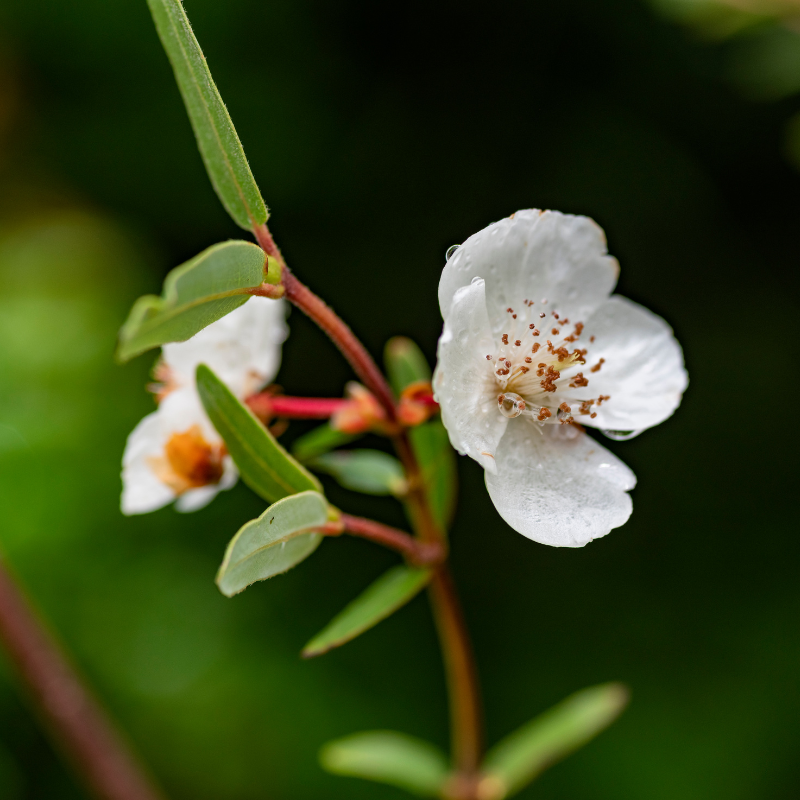
As the adorable name suggests, the Leatherwood ‘Pink Cloud’ has light pink flowers with a cute and fluffy silhouette. If you’re searching for care tips for this species, we recommend placing it in acidic earth that allows excess moisture to drain away and giving it mulch.
4. Guitar Plant (Lomatia Tinctoria)
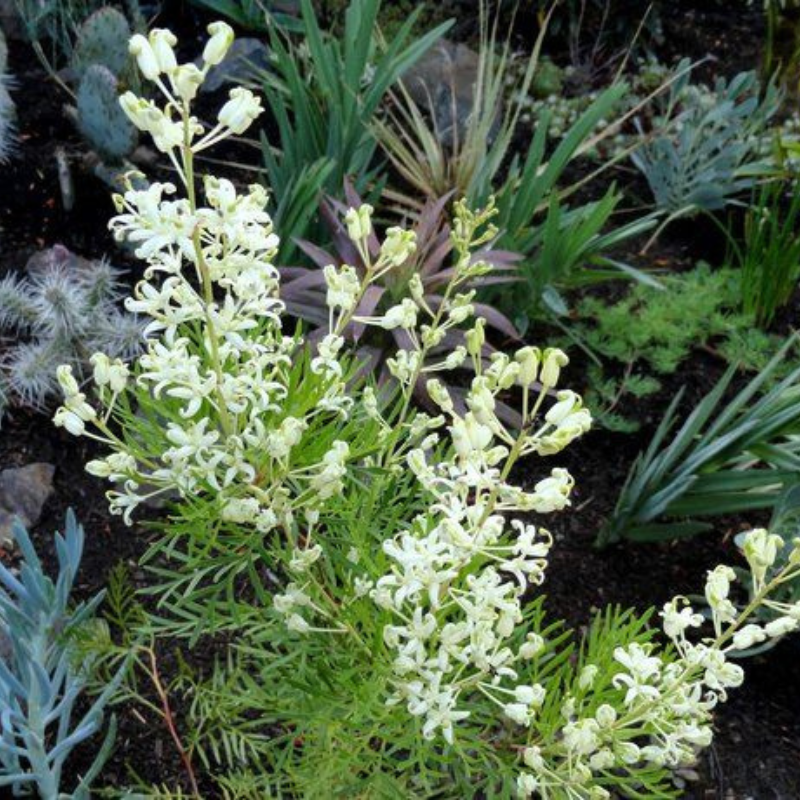
For those that want a little shrub to fill up a spot in their flower bed, we love that the Guitar plant (Lomatia tinctoria) ticks these boxes while producing fragrant white flowers.
As if that wasn’t good enough, it can even survive frosts and also likes being partially in the shade, so you can cover that bare earth patch you dislike!
5. Dusty Daisy Bush (Olearia Phlogopappa ‘Combers Blue’)

As indicated by the name, this plant produces friendly daisy-shaped flowers in purple-blue, which are super pretty! To look after the Dusty daisy bush (Olearia phlogopappa ‘Combers Blue’), we advise you to make sure it’s well mulched.
6. Lemon Bottlebrush (Callistemon Pallidus/Melaleuca Pallida)
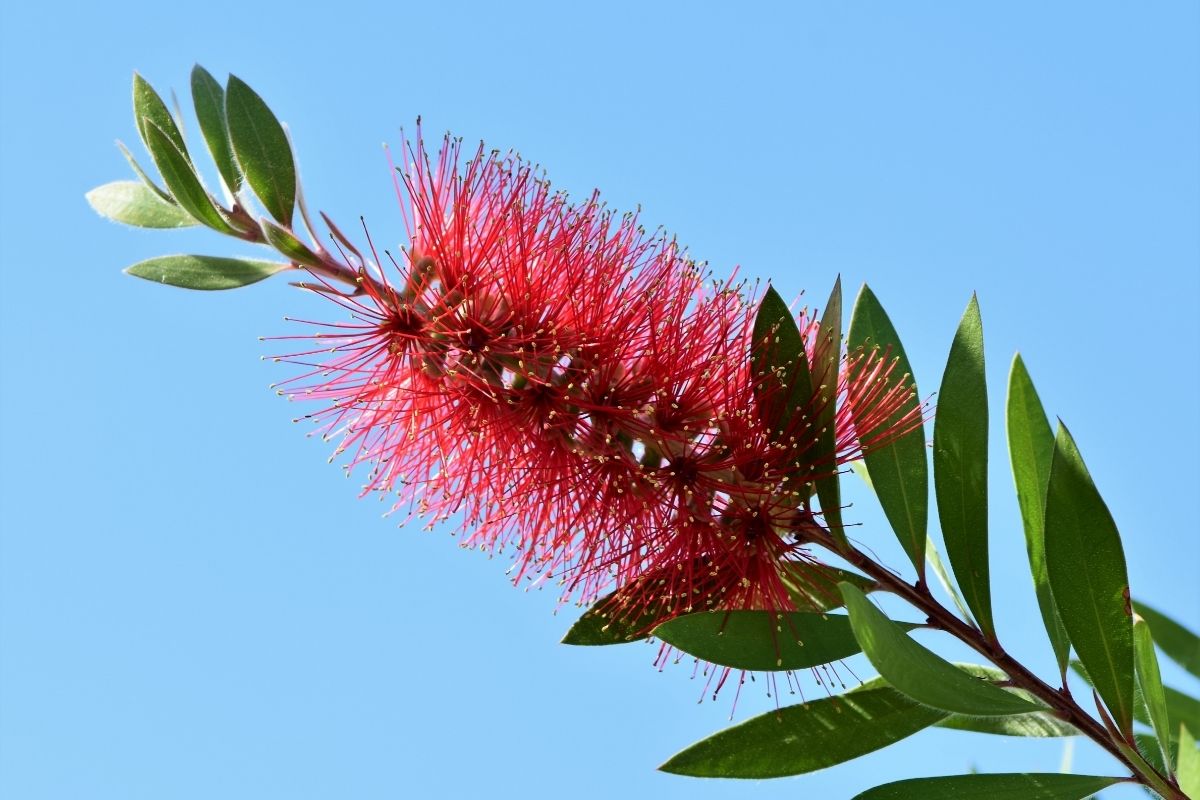
The appropriately named Lemon bottlebrush has flowers that look like a yellow, bristly pipe-cleaner, so it’s perfect for adding fragrance and structure to your garden. In addition, this species has long green thin leaves similar to those on the eucalyptus.
7. Australian Daisy (Brachyscome)
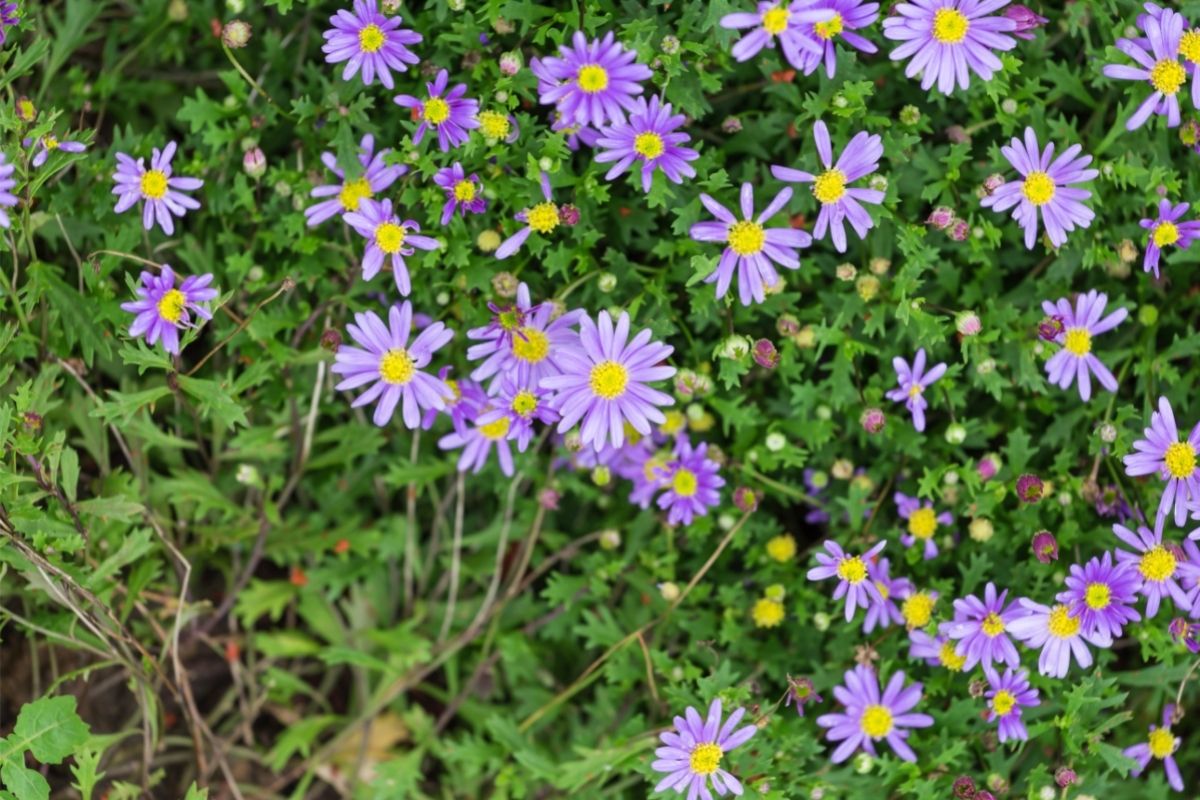
In the Australian plants series Australian daisy (Brachyscome) is popular amongst gardeners because it’s suitable for covering a sizable low-down patch with its blue, white, or purple blossoms. The advantage of looking after this species is that it’s not fussy, thriving in wholly or partially sunny spots.
8. Bird’s Nest Fern (Asplenium Australasicum)
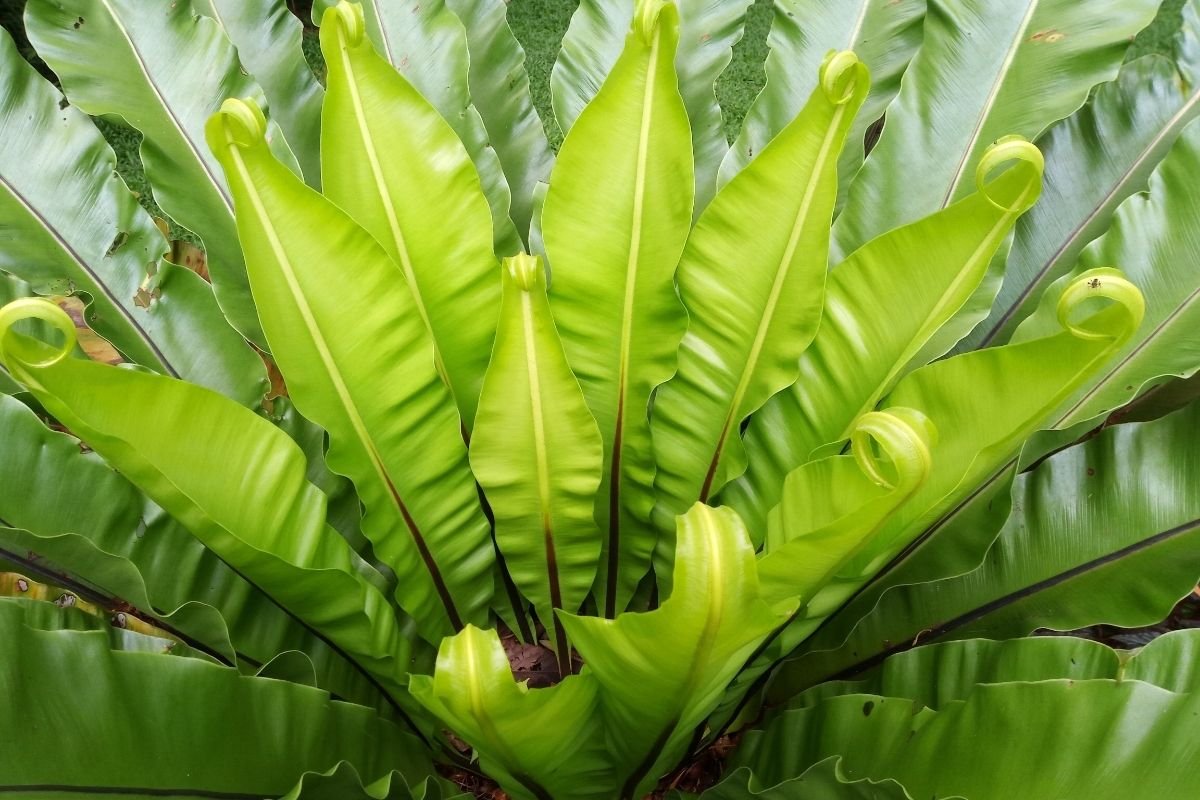
The adorably named Bird’s nest fern resembles a scruffy green home for these little winged creatures and is an ideal species to put in shaded places. This plant can grow to 2 meters and doesn’t have to be grown indoors as they’re a popular houseplant for many!
9. Banksia (Banksias)
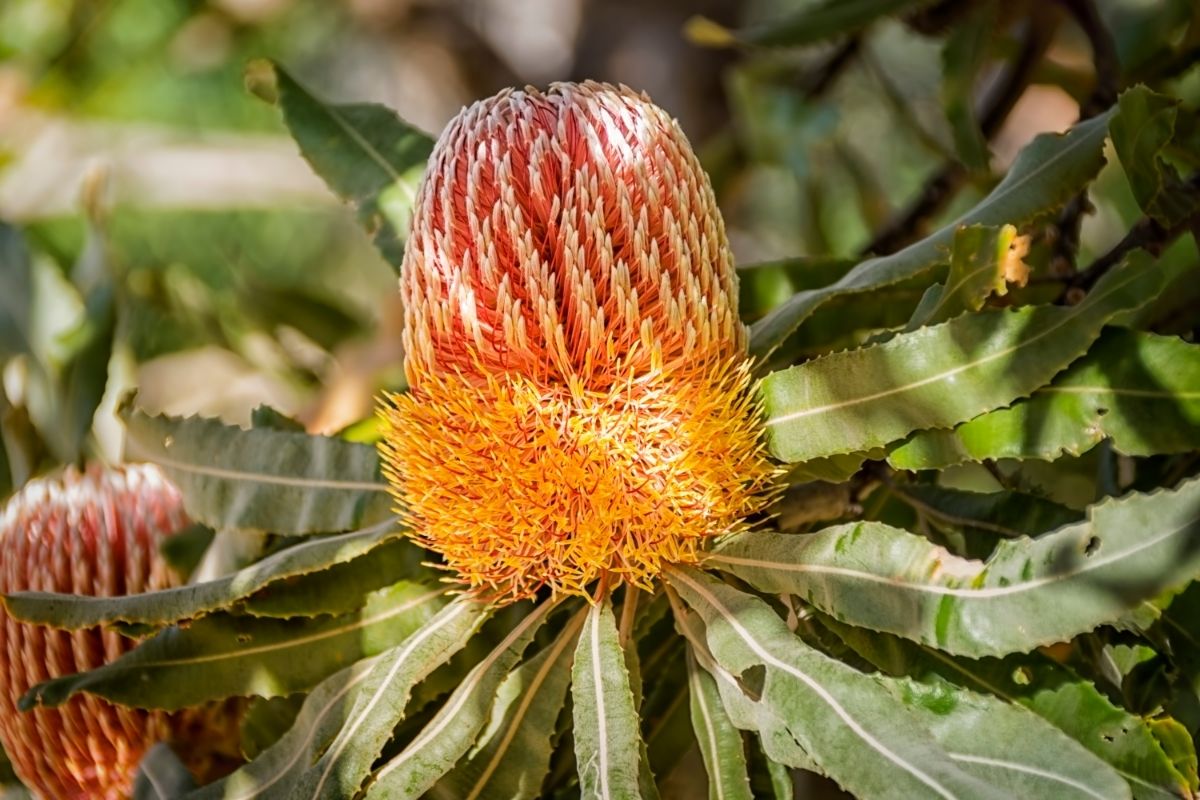
If you’re looking for a structured plant that comes in subspecies that produce different colored petals, the Banksia is an excellent choice! This plant has intricate spiraling formations, which thrive when many UV rays beat down on them, and they’re in well-draining soil.
10. Bottlebrush (Callistemon)
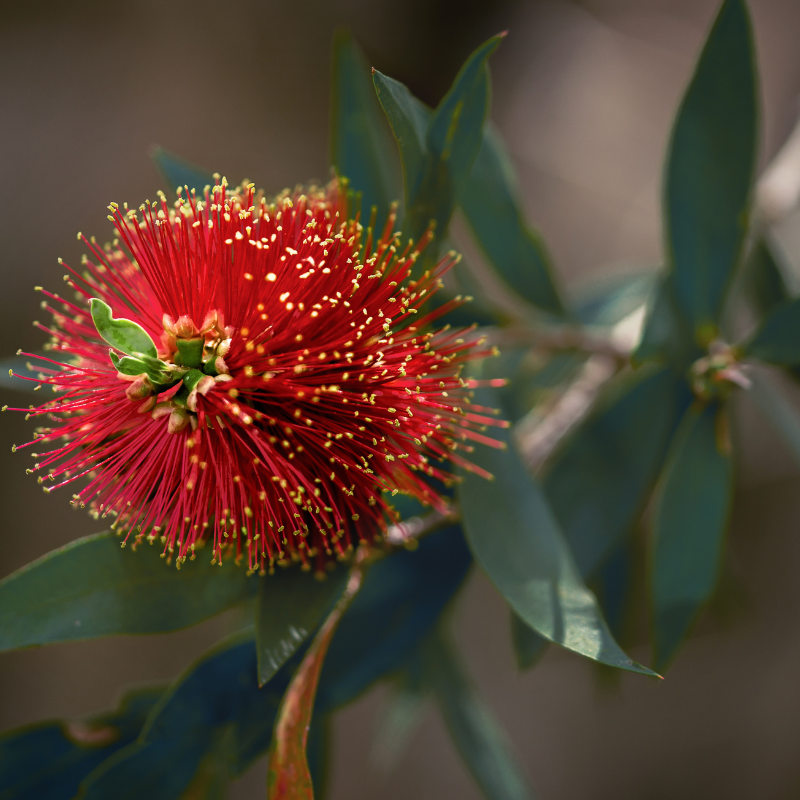
The Bottlebrush (Callistemon) is a beautifully versatile and unfussy plant, which grows bright red spiky flowers during the warmer seasons.
The vibrant color means that they’re super attractive to pollinating species, including butterflies, birds, and bees, which is excellent for those who want to help their local environment.
11. Cycad (Macrozamia)
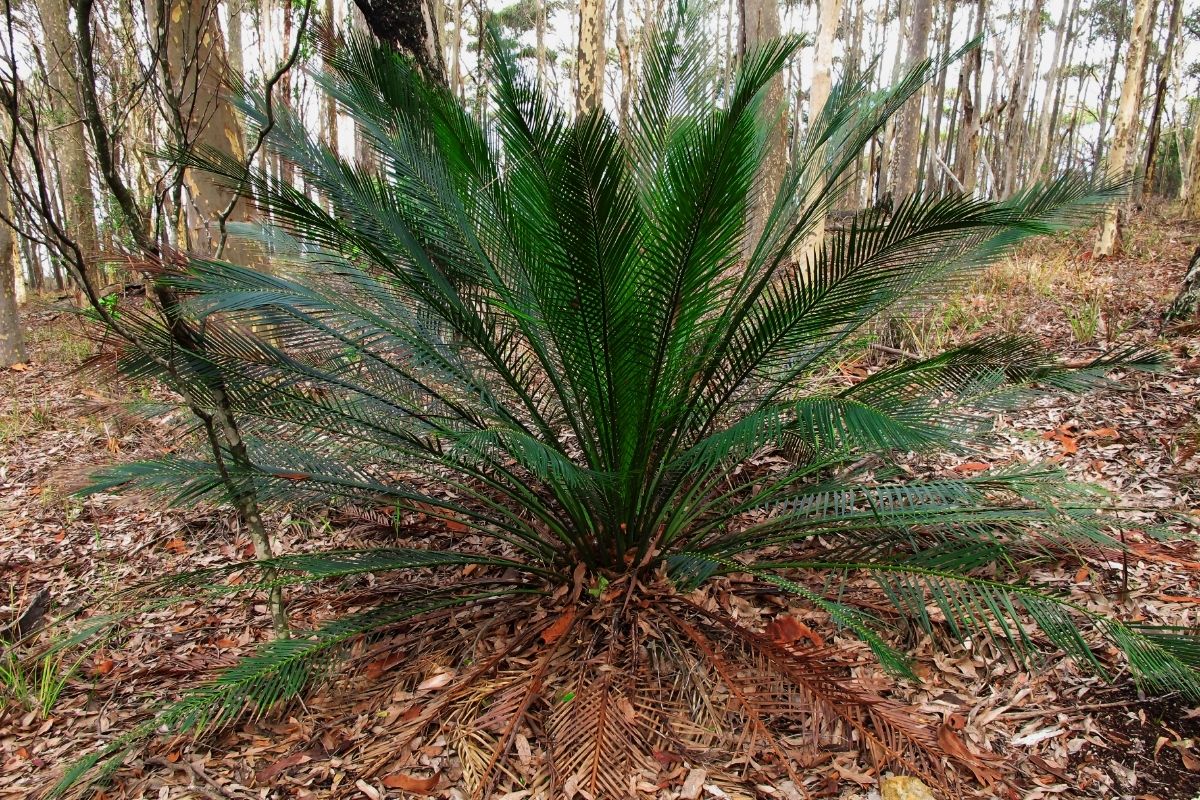
The Cycad (Macrozamia) is undoubtedly a show-stopper because it has feathering palm leaves that can reach 2 meters long! To encourage this majestic plant to reach its full potential, we advise you to allow it to have as much access as possible to sunlight.
12. Flame Pea (Chorizema)
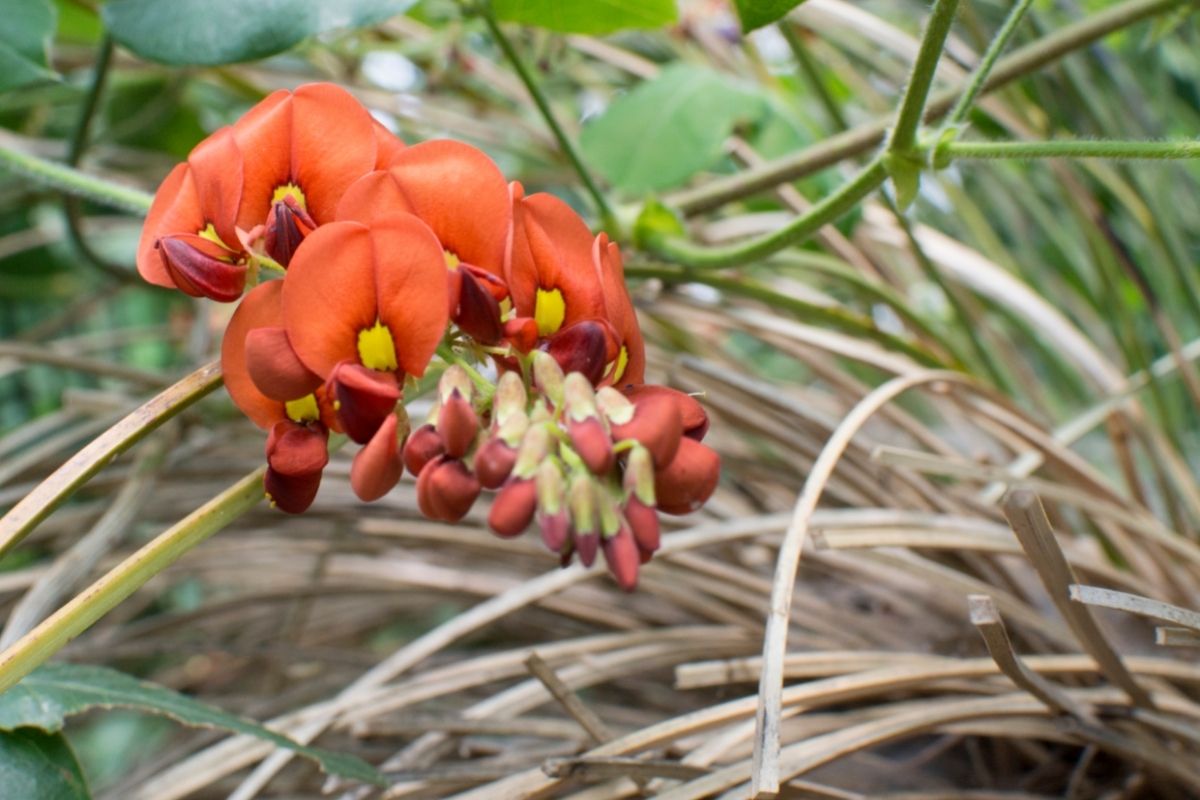
The Flame pea (Chorizema) has stunning red-orange semi-circular flowers, which sprout from delicate muted green stems. This evergreen won’t like it if it’s planted somewhere that gets very wet, so ensure it can be put in a well-draining spot before you decide to get this one!
13. Elkhorn And Staghorn Fern (Platycerium)
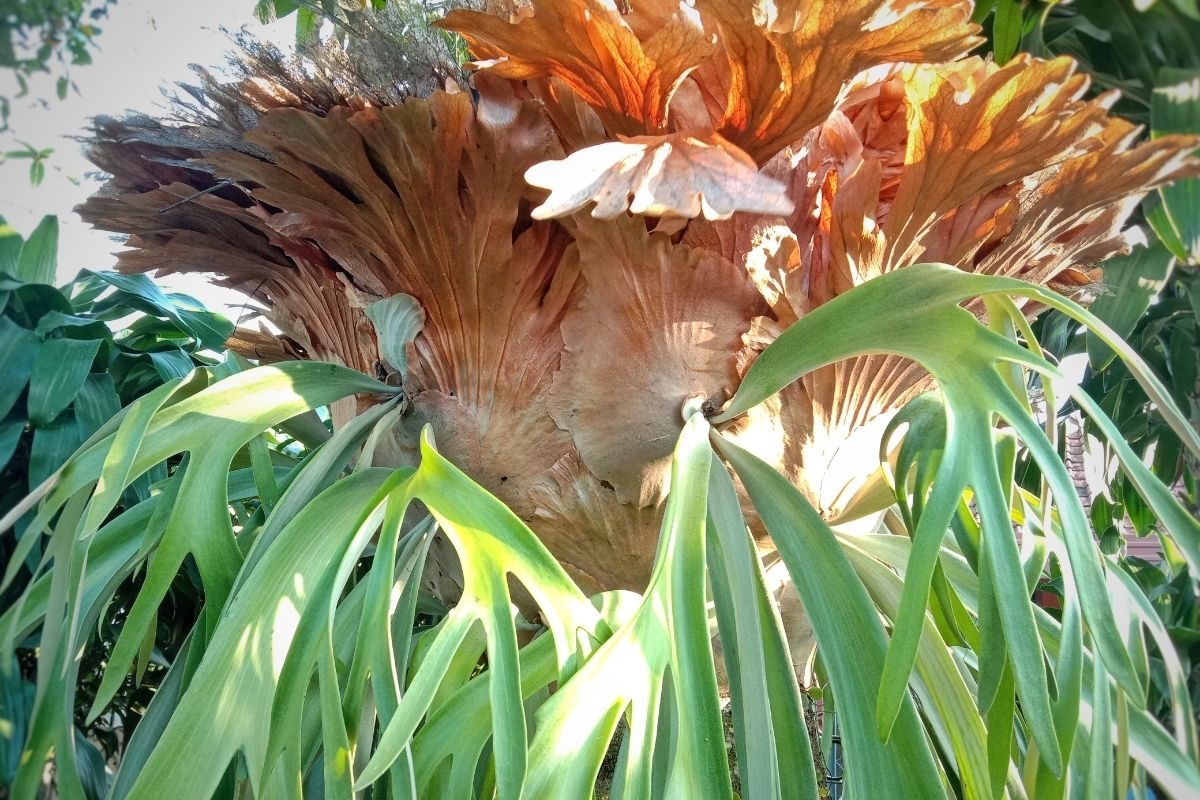
This species looks like a sci-fi coral that’s found its way out of the ocean and latched itself on Australian plants! The Elkhorn and staghorn fern (Platycerium)’s leaves look a bit like deer’s antlers, which adore being kept in moist and hot conditions.
14. Everlasting Daisies (Xerochrysum Bracteatum)

The Everlasting daisies (Xerochrysum bracteatum) bloom from Spring to Autumn in pink, red, yellow, orange, mauve, and blue. To create a wildflower field in your back garden, we recommend planting these sunny blossoms as they mostly look after themselves.
15. Fan Palm (Liccuala Ramsayi)
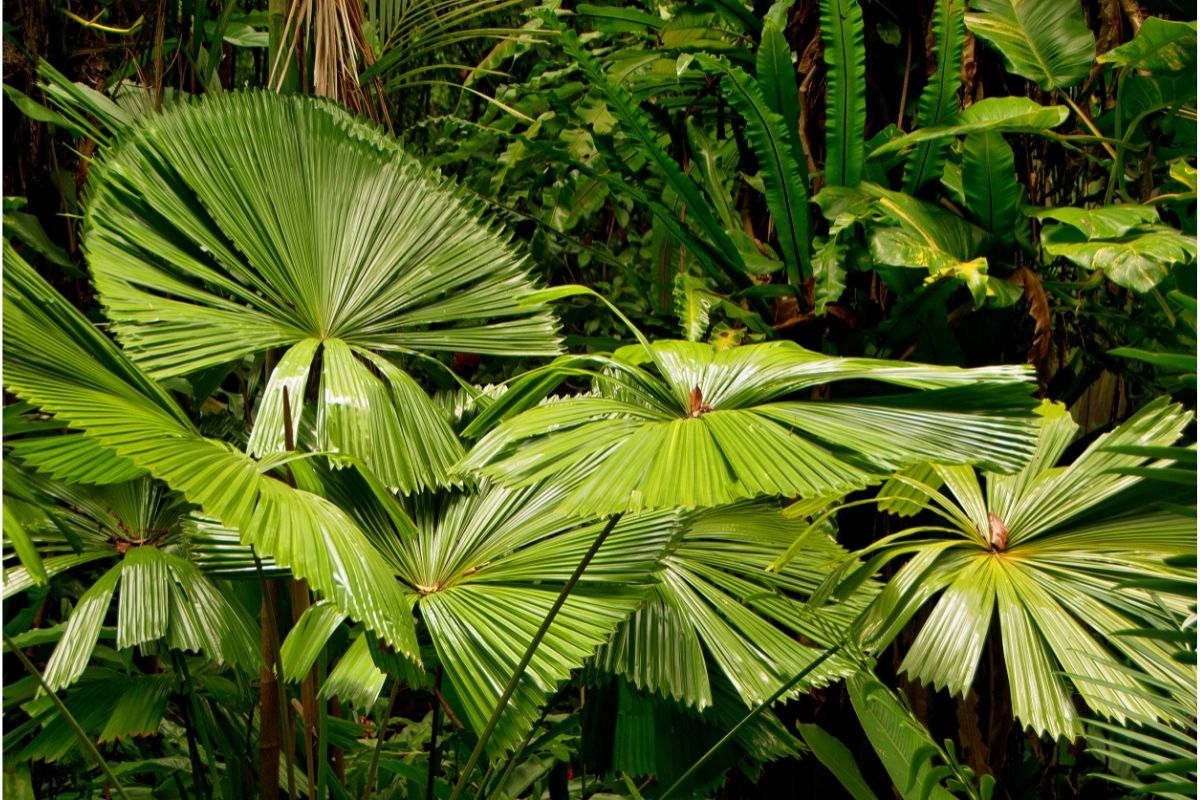
The Fan palm (Liccuala ramsayi) is an excellent solution to an overly sunny garden, as these Australian plants can cast welcome shadows that people can sit under. In fact, this species can grow to 15 meters high and aren’t limited to being planted outdoors, which is perfect for those with no garden.
16. Grass Tree (Xanthorrhoa Australis)

The Grass tree has characteristic dark trunks reaching upwards towards the sun, topped by grassy leaves that can spike 5 meters into the air. If you have a rockery looking unloved, we advise choosing this plant as it can thrive in well-draining conditions.
17. Finger Lime (Citrus Australasica)

True to the name, this plant produces finger-shaped juicy fruits with attractive light pink centers. To care for this unique fruit tree, we recommend adding rich compost to its soil and ensuring that the plant isn’t in a location that’s prone to getting heavy frosts.
18. Hakea
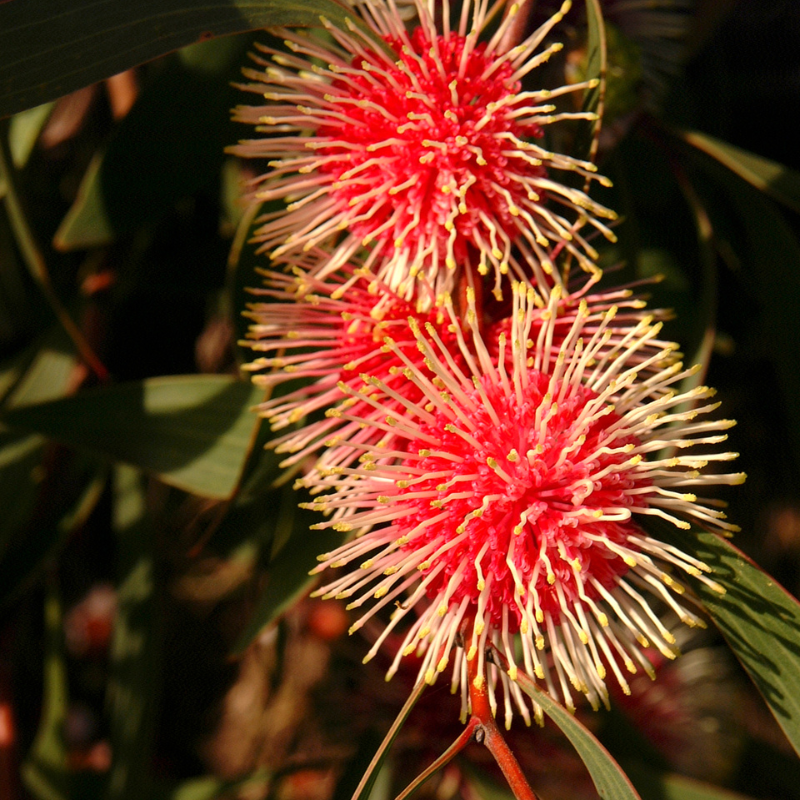
The Hakea is a plant with super stylish petals, which have hot pink centers and white spikes reaching outwards in a rotund formation. However, if this particular color scheme doesn’t suit your landscaping vision, there are more than 140 subspecies that include tiny to medium-sized shrubs.
19. Grevillea
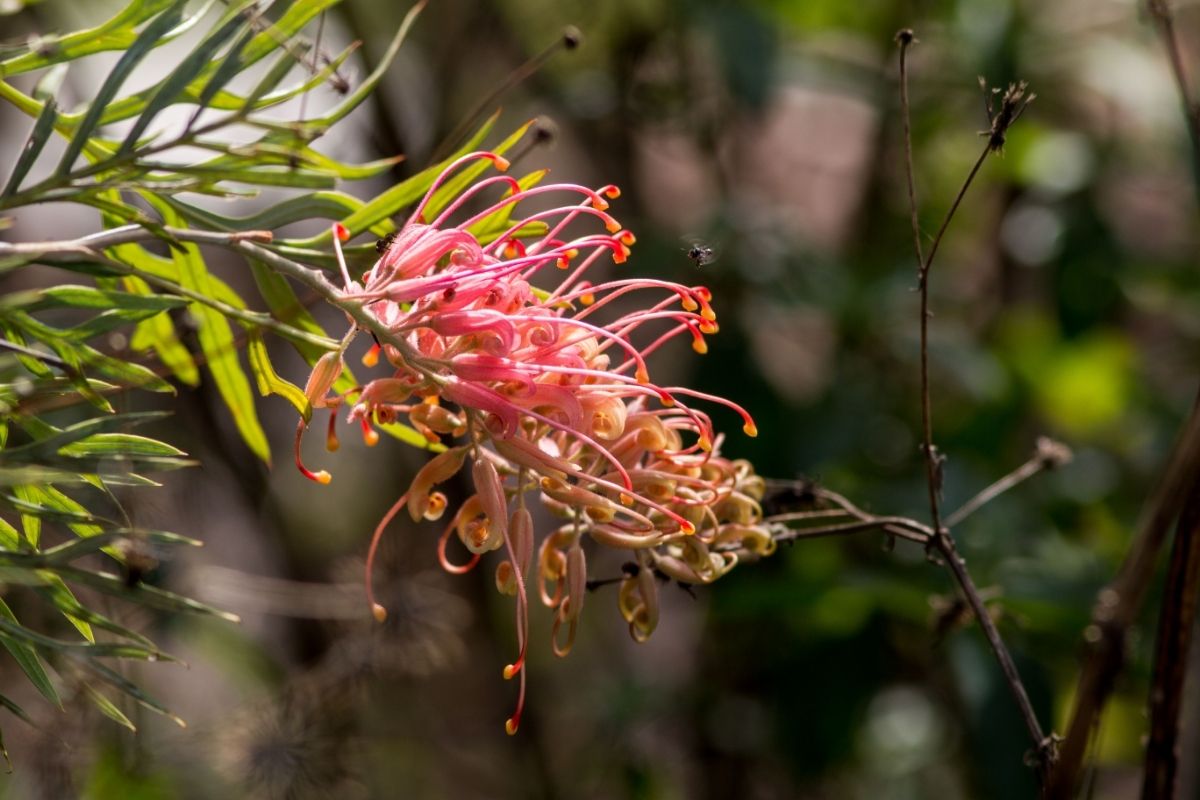
This is a tropical-looking plant that has a fiery color scheme with petals in bright red, orange, and golden yellow, which are beloved by pollinators. To cultivate this super vibrant species, we recommend that you make sure you have a spare bright spot that will allow excess water to run away.
20. Happy Wanderer (Hardenbergia Violacea)
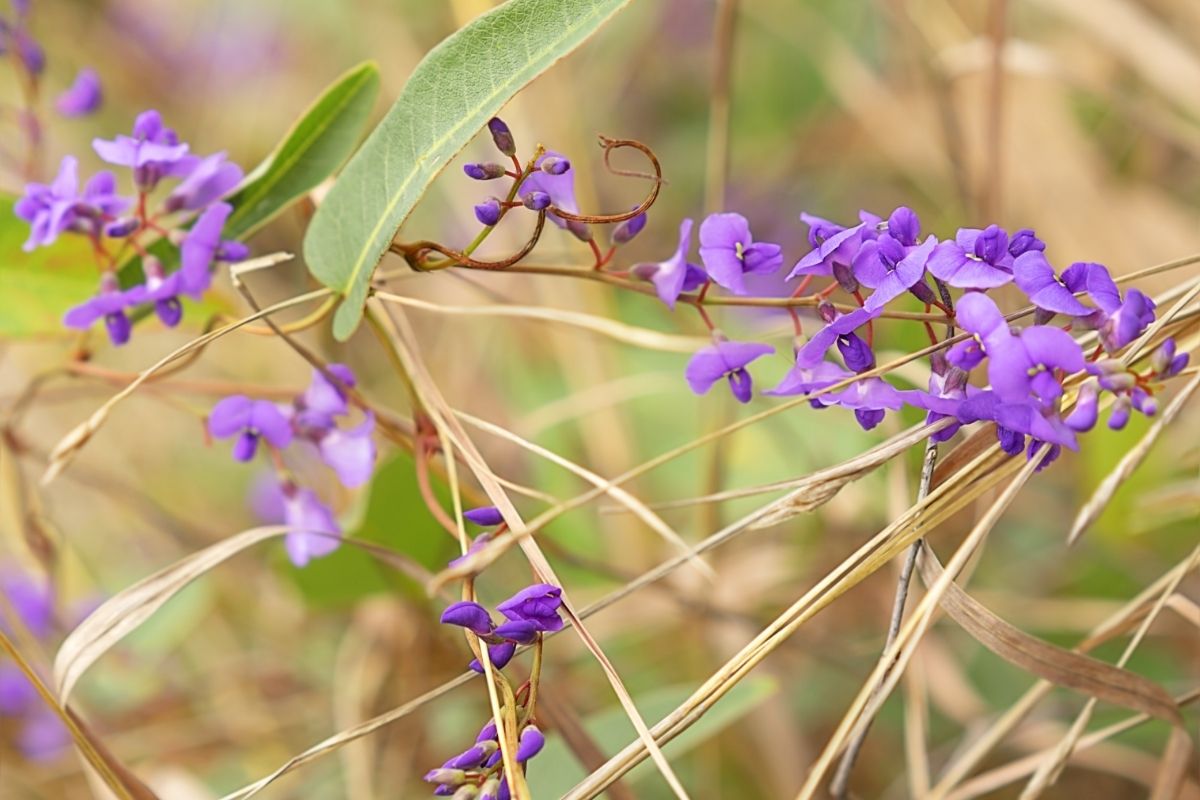
The Happy Wanderer (Hardenbergia violacea) is an adorably named plant with equally loveable tiny orchid-shaped purple and white blossoms. This species has delicate dark-brown stems with striking triangular foliage, perfect for training to a wall, fence, or archway.
21. Illawarra Flame Tree (Brachychiton Acerifolius)
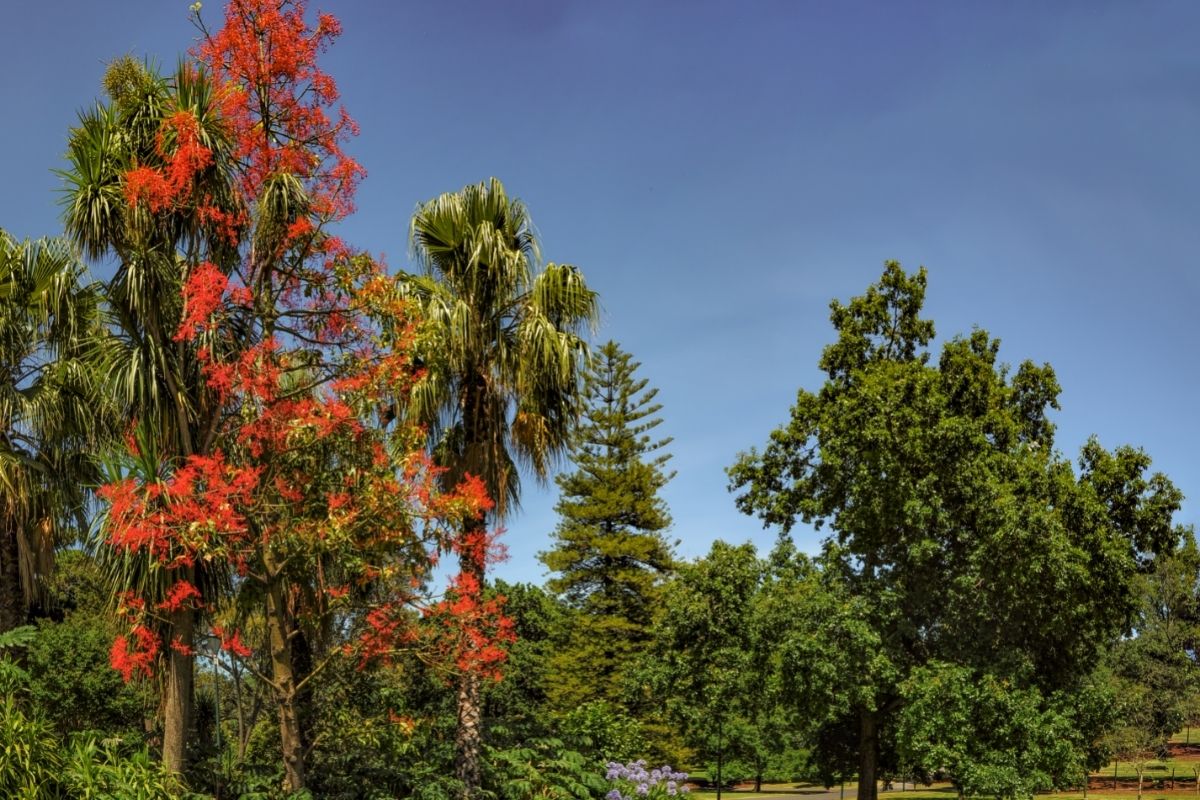
Are you searching for a massive tree with bold red foliage that is super easy for beginners to care for? If you are, the Illawarra flame tree (Brachychiton acerifolius) ticks all these boxes as long as you give it water aplenty.
RELATED: Gone Walkabout: 27 Different Types Of Australian Trees
22. Kangaroo Grass (Themeda Australis)
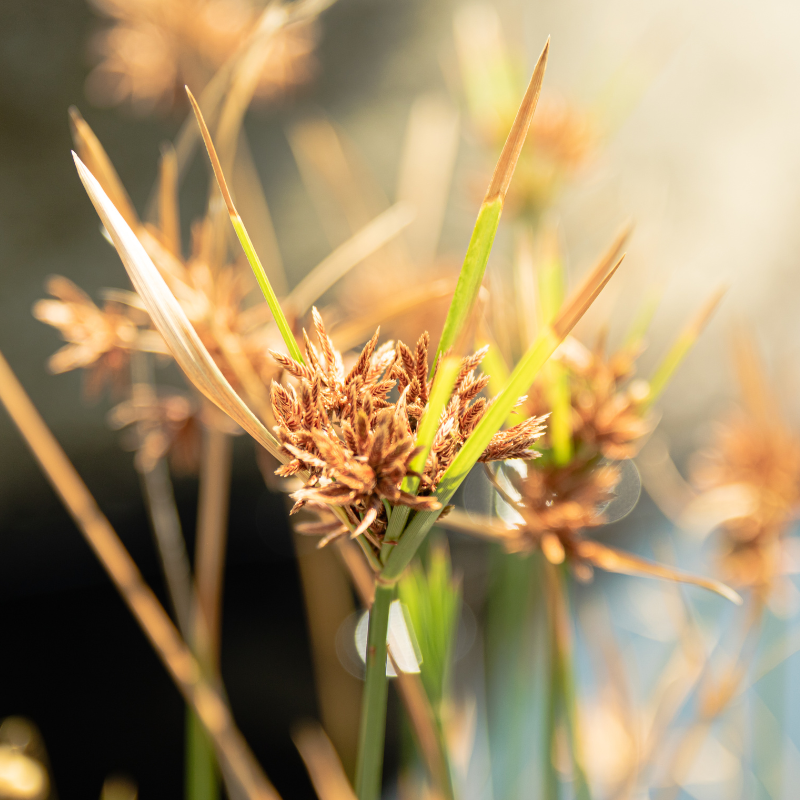
The Kangaroo grass (Themeda australis) is a strong contender for the most Australian sounding plant that exists! We recommend placing this one in a well-drained spot as it will thrive here, producing leaves that are up to 30cm long!
23. Kangaroo Paw (Anigozanthos)

Another strong contender for the most Australian sounding plant is the Kangaroo paw (Anigozanthos), which grows abstract marsupial-shaped red and green stems. This super bold plant loves being acidic earth, so long as it can soak up the sun and isn’t in a wet spot.
24. Lilly Pilly (Syzygium Smithii)
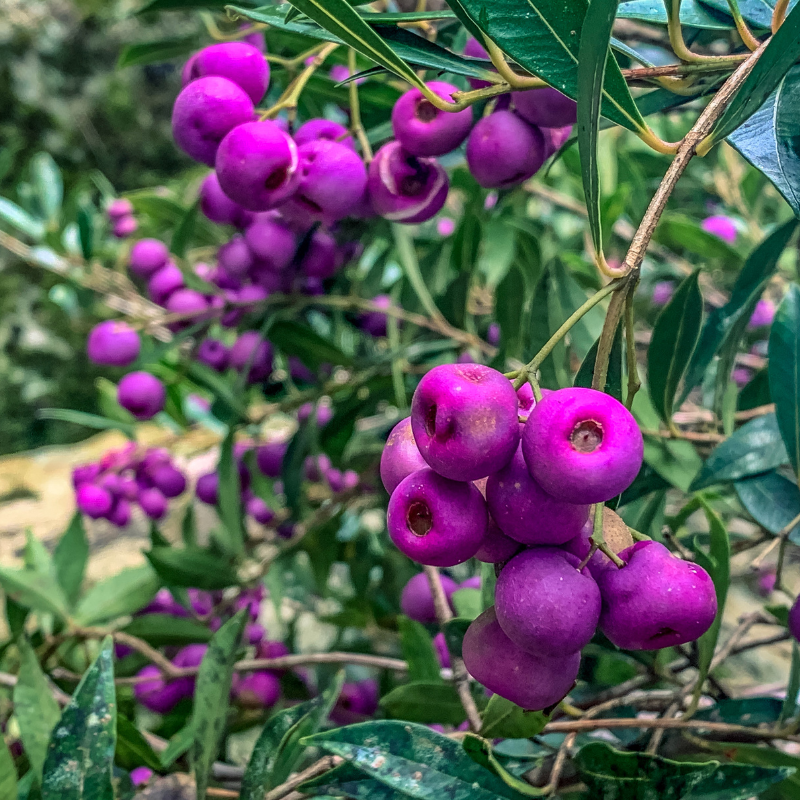
The Lilly pilly (Syzygium smithii) is a tree with eye-catching pink fruits that can be eaten and become ripe during the summer months. Perhaps the best thing about looking after this plant is that it’s not overly sensitive to conditions, meaning it’s easy to nurture and resilient to changing weather.
25. Mat-Rush (Lomandra)
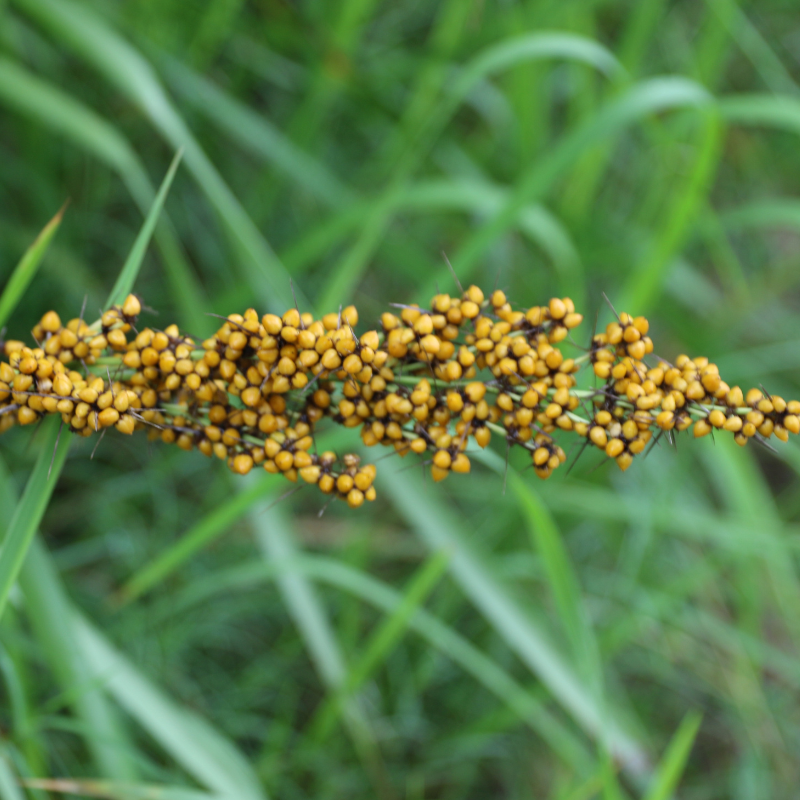
As the name suggests, the Mat-rush (Lomandra) is an excellent plant for covering ground because it produces dense spiky leaves. This is a perennial Australian plants and can even grow little white flowers that don’t mind being exposed to drought conditions, ideal for the Australian climate.
Conclusion
From grasses to towering trees, Australia has diverse plant species! Our personal favorite is the Kangaroo paw plant because the red stems are unique and sure to surprise people with their vibrancy. We’ve taken you through 25 different Australian plants, which have been carefully selected to suit you.
For more fun content on the natural world, please check out our other articles. We hope you enjoyed this one and happy gardening!







